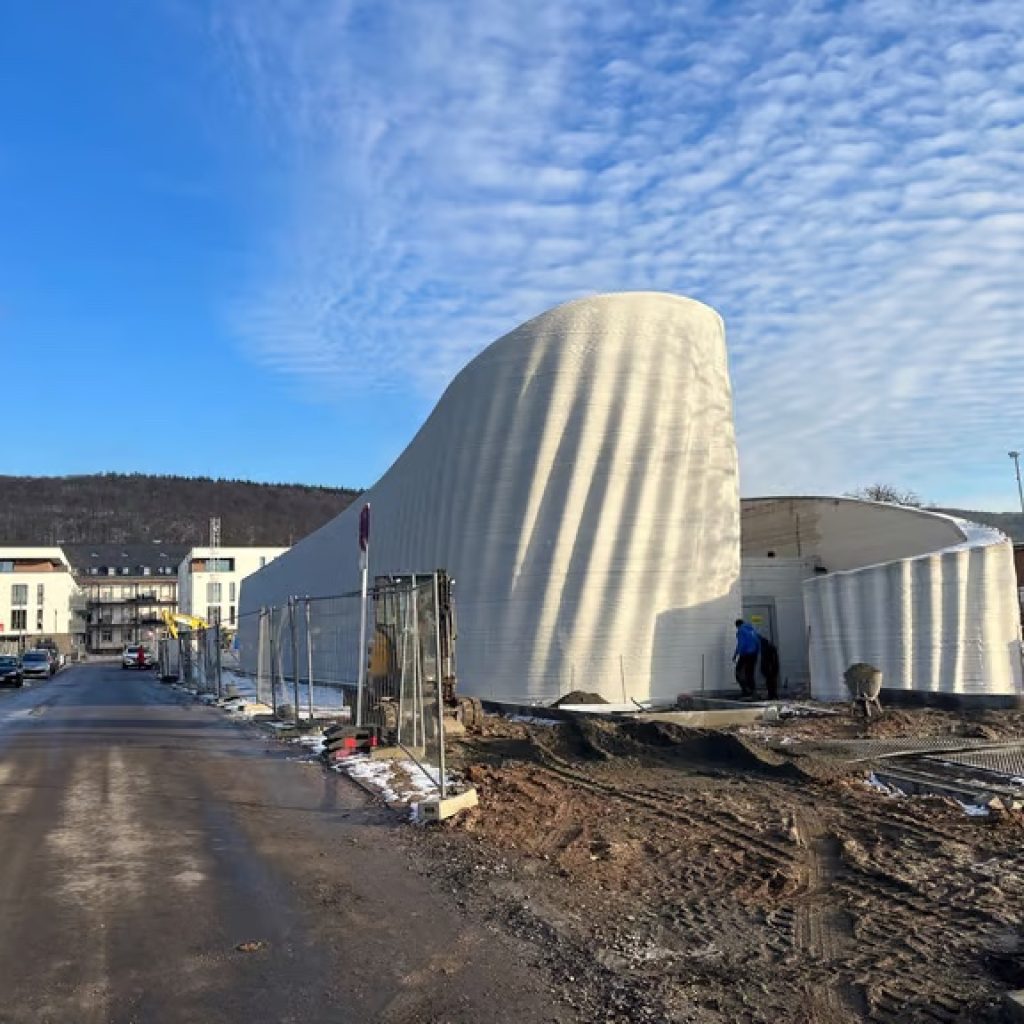In Heidelberg, Germany, the Wave House stands as Europe’s largest 3D-printed building, crafted by the innovative team behind the project. Tasked with erecting a new data center in an urban setting, the architects injected creativity into the typically mundane world of cloud-computing infrastructure. Designed by SSV and Mense Korte and constructed by Peri 3D Construction for developer KrausGruppe, the Wave House spans 600 sq m (6,600 sq ft). Its distinctive wave-like appearance not only adds flair but also addresses the challenge of making data centers visually appealing in city environments.
The unconventional design, featuring wave-patterned walls, was made possible through 3D construction printing technology, allowing for unparalleled design freedom. Utilizing a COBOD BOD2 printer, similar to those used in previous notable 3D-printed architecture projects, the exterior walls were formed layer by layer from a recyclable cement-like mixture. The printing process, lasting approximately 140 hours, resulted in exterior walls measuring 54 m (177 ft) in length, 11 m (36 ft) in width, and 9 m (29.5 ft) in height.
Following the printing phase, human workers completed the project by adding the roof, doors, lighting, and necessary infrastructure for a modern data center. Notably, a robotic painter from Deutsche Amphibolin-Werke was employed for interior painting. The entire construction process, from April to October 2023, significantly reduced CO2 emissions compared to traditional methods, as confirmed by the Kraus Gruppe.





